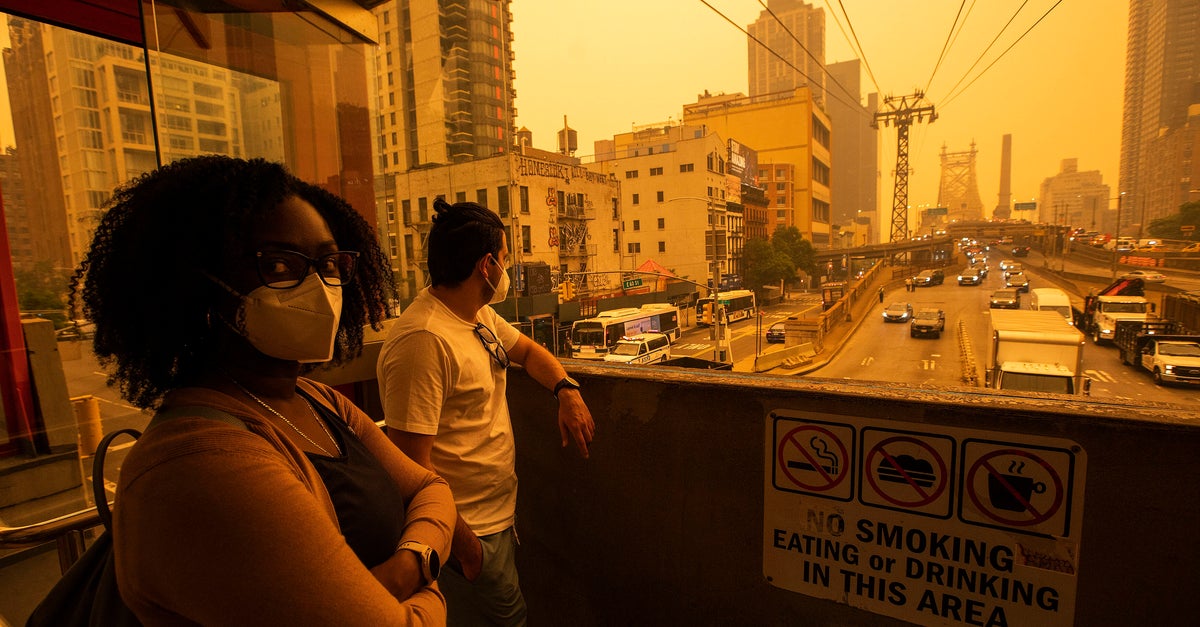During this week’s smoky haze in central New Jersey, Kathy Jackson was forced to close all her windows and rely on the air conditioner to filter out the wildfire smoke coming from Canada. As an asthmatic with severe chronic obstructive pulmonary disease, Jackson couldn’t risk breathing in the dangerous particles. However, running the air conditioner all day and night would have been financially devastating if she hadn’t switched to a fixed-price utility bill. This situation highlights the exorbitant electricity rates that millions of people are still paying as wildfires continue to blanket the continent with toxic air.
The Northeastern region of the United States, where the smoke is originating from, already faces high electricity rates compared to the national average due to the closure of nuclear power plants and reliance on natural gas. These prices are expected to rise further as government policies to reduce pollution increase demand for electricity, especially with the growing use of electric vehicles and other appliances. As wildfires become more frequent and global temperatures continue to rise, the need for clean air will only increase.
The COVID-19 pandemic brought temporary relief for households struggling with utility bills, as shut-offs were prohibited in many states. However, these protections have ended, leaving millions with significant debts. Low-income households are particularly affected, as they are unable to afford the high costs of running air conditioners or air purifiers to combat the wildfire smoke. This creates a challenging situation not only during this event but throughout the summer.
The economic impact of transitioning from fossil fuels to cleaner energy sources falls heavily on those who have already suffered the most from pollution and price fluctuations. Working-class neighborhoods near fossil fuel plants and highways experience higher rates of respiratory illnesses. In the specific case of Astoria, Queens, where the largest oil- and gas-burning power stations are located, residents like Costa Constantinides are faced with the effects of both forest fires and local pollution. Constantinides, a lifelong resident, experienced COVID-19-like symptoms due to the smoke and had to stay indoors with cough medicine to alleviate his symptoms.
The environmental and economic disparities in the United States are closely tied to race. Black Americans, in particular, experience higher concentrations of air pollution compared to white populations. Poorer neighborhoods with less white residents also have higher energy bills, as well as draftier homes. Seniors and minority households spend a larger percentage of their income on energy bills compared to the overall population. Regions that rely on non-fossil fuel sources, such as Québec and its hydroelectric dams, enjoy more stable and lower electricity prices. However, the transition away from fossil fuels in most parts of the U.S. is not yet sufficient to alleviate the price pressure.
Addressing these long-term issues requires comprehensive programs and policies. Transitioning to a cleaner electric grid and reducing dependence on natural gas will likely result in higher electricity prices in the short and medium term. It is necessary to find sustainable solutions to ensure affordable access to energy for all individuals, especially those vulnerable to the effects of air pollution and climate change.
Denial of responsibility! VigourTimes is an automatic aggregator of Global media. In each content, the hyperlink to the primary source is specified. All trademarks belong to their rightful owners, and all materials to their authors. For any complaint, please reach us at – [email protected]. We will take necessary action within 24 hours.


